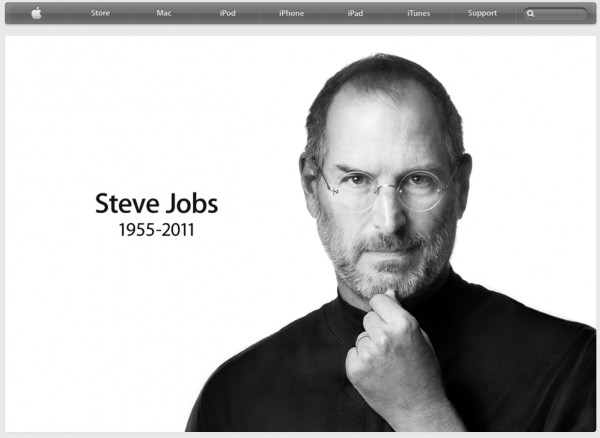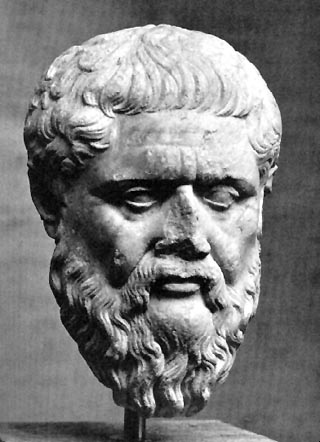The iconic iPhone. The iconic iPod. The iconic Steve Jobs. Rarely has the perception of an individual been so synonymous with the perception of a line of products, commodities, material objects. In this blog post I want to explore how this slippage between individual and object is largely due to how both are presented to the public. For this task I turn to apple.com, the virtual HQ of Apple, to find a remarkably simple black and white photograph depicting the late Steve Jobs. Yet beneath this veneer of simplicity lies a fairly complex set of visual codes which, I believe, require further examination.
The caption “Steve Jobs 1955-2011″ dramatically impacts our reading of the image. The man that we are looking has deceased yet in the photograph he is alive. And not only is he alive, but also, he looks far more healthy than most of his colleagues, friends and family members will likely remember him. Rather than depicting an ill man, the Apple corporate hierarchy has, of course, chosen a photograph that puts Steve Job in a rather ‘good light’ (the photographic origin of this expression should be acknowledged). Here is a man who looks calm, thoughtful, even content as he looks into the camera. As much as the photograph is simple, Jobs’ trademark black turtleneck sweater and his round frameless glasses further suggest that Jobs himself is a man who prefers asceticism over excess. In a sense, the very attributes of the photograph are meant to underscore Apple’s pursuit of form enabling function. My point is that in the photograph Steve Jobs was represented like one of Apple’s (other) iconic products. A white backdrop, a simple studio lighting set up and defined outlines – these are the visual codes of product photography.
Apart from the slippage between individual and object, other aspects in the photographs require further scrutiny. The wedding band for instance – Roland Barthes might have regarded it as the punctum – suggests that Steve Jobs was a loyal and trustworthy family man. As much as he was the head of a large corporation he was also the head of a family. Further underlining Steve Jobs perceived role as leader, it is no coincidence that the photograph was cropped at the middle of the chest evoking comparisons with sculptural busts. Like Plato, Caesar or Napoleon, Steve Jobs is one to be remembered.
Yet there is another element in the photograph, one that is also borrowed from classical sculpture, which, I believe, impacts our reading of the image the most: Jobs’ left thumb and index finger resting on his chin. Similar to Rodin’s iconic sculpture The Thinker, Jobs is represented as an individual deeply engaged in his own thoughts. He is the master, the visionary, the genius of Apple. The fact that corporations are controlled by board members, the fact that corporations are governed by shareholders, and equally, the fact that the products of such corporations are produced by hundreds and thousands of anonymous workers is not discernible in the photograph. It is not necessarily what is in the photograph, but also, what is outside of the photograph which tells us what type of corporate image Apple is pursuing in it’s visual communication strategy.
Those following the news footage of people resting flowers (and apples) at Apple stores throughout the world will not have failed to recognize the religious connotations of these actions. One iPad and iPhone application even illuminates a virtual candlestick to commemorate Steve Jobs’ death. For the next few days, Apple stores will continue to resemble sites of pilgrimage. A cynic might say that this is, perhaps, further affirmation that consumerism is our religion. Yet I would suggest that the manifestation of Steve Jobs as icon and the subsequent religious-like mourning of his death is not necessarily a reflection of a society deeply embroiled in consumption, but rather, I believe it reflects a society coming to terms with how individuals are virtually connected, how they share things and how they communicate. The sad irony then that millions of people found out about Jobs’ death via an Apple device.
To subscribe to this blog, please enter your email address here and check your inbox for the verification email.
I would like to thank my 1st year photography students at the Australian National University for providing me with invaluable material for this post.























